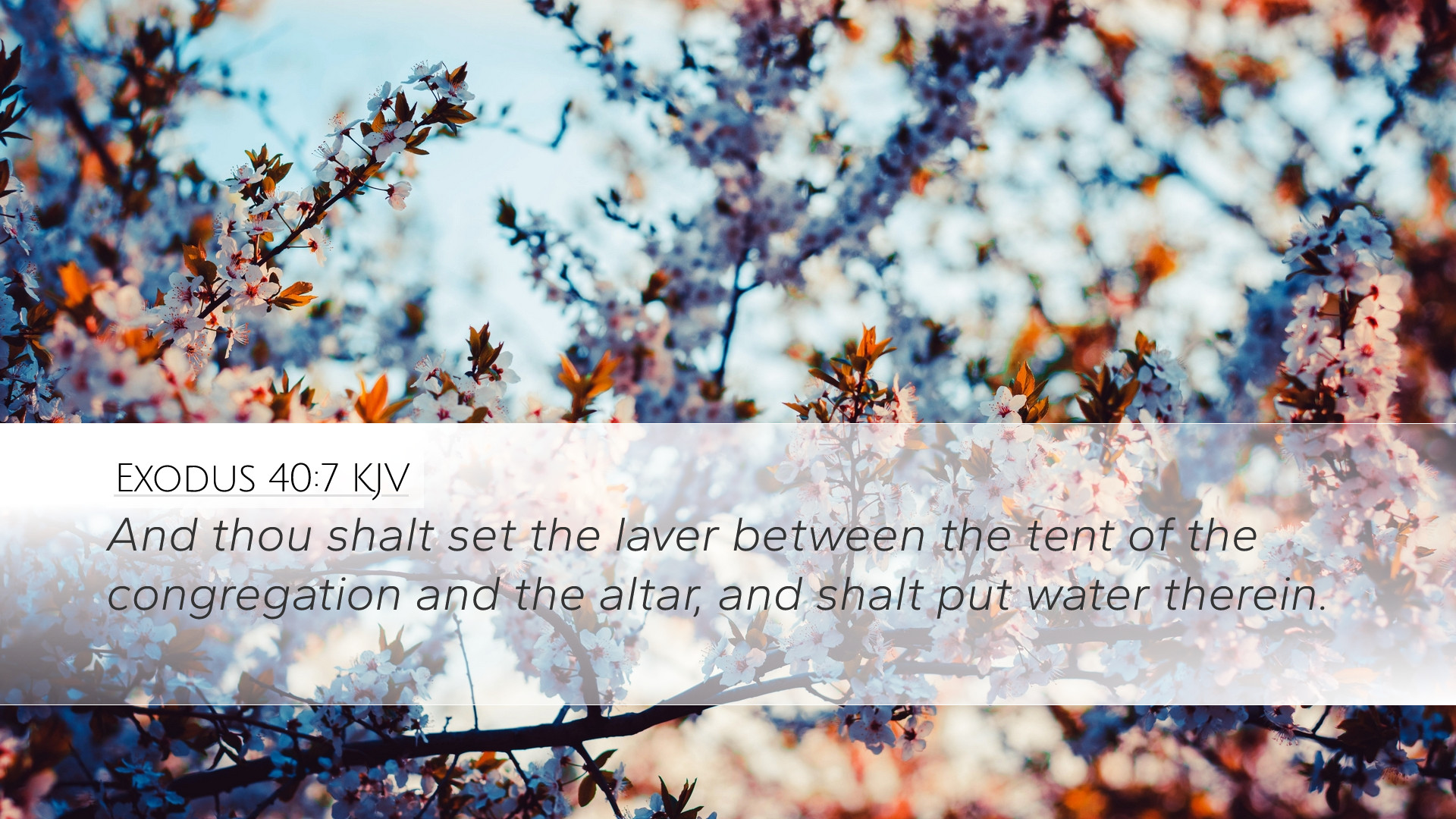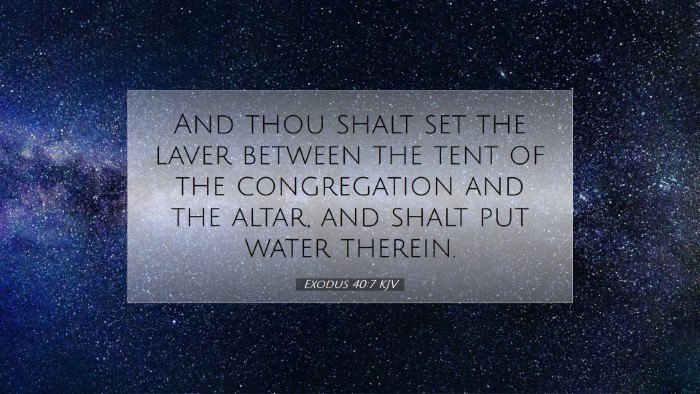Commentary on Exodus 40:7
Introduction
Exodus 40:7 states, “And thou shalt put the laver between the tent of the congregation and the altar, and thou shalt put water therein.” This verse is pivotal in understanding the establishment of worship and purification in the Israelite tradition. The placement and purpose of the laver symbolically enhance the understanding of holiness, cleanliness, and accountability before God.
Historical Context
The Book of Exodus describes a crucial period in Israel's history when the people were forming their identity as a nation under God. After the Exodus from Egypt, they received the Law and directives for constructing the Tabernacle—a portable dwelling that symbolized God’s presence among them. The laver was an essential element in this sanctuary, serving as a means for ritual purification.
Significance of the Laver
- Symbol of Purification: The laver represents the necessity of cleansing prior to approaching the holy presence of God. Both Matthew Henry and Adam Clarke emphasize its importance in the ritualistic framework of service.
- Placement Matters: The specific location between the altar and the tent reminds the Israelites that before offering sacrifices, one must be cleansed from impurities. Albert Barnes draws attention to the significance of the laver being situated at this intersection of sacrifice and worship.
- Water as a Symbol: Water in biblical contexts often symbolizes life and spiritual renewal. The laver's purpose to hold water reinforces the concept of spiritual washing and renewal necessary for communion with God.
Theological Implications
This verse invites deeper theological reflection regarding purity and holiness. The act of washing before performing sacred duties signifies a deeper requirement for inner purity as noted by Clarke. The nature of approaching God—whether through prayer, worship, or service—must entail a recognition of our own sins and the need for divine cleansing.
Preparatory Steps to Worship
Henry highlights the necessity of preparation before coming into the presence of God, reflecting a personal readiness. This theme resonates throughout scripture, as seen in the New Testament wherein believers are called to examine themselves (1 Corinthians 11:28). The laver thereby embodies a broader spiritual truth regarding the preparation of the heart as an essential precursor to worship.
Instruction and Obedience
The directive given in this verse must be viewed in light of the absolute obedience required from the Israelites. As they set up the sanctuary, their adherence to God's instructions was critical. Barnes notes that compliance with such specifics was crucial for ensuring God’s continued presence among them. This reflects the broader biblical theme that divine blessings often accompany faithful adherence to God’s commands.
Role of the Priests
The priests had a special responsibility for utilizing the laver, which further signifies the importance of leadership in spiritual matters. Clarke elaborates on the symbolism of the priests being a bridge between God and the people, emphasizing the standards they were held to. Their purification ritual underscores the sacredness of their office and the need for integrity in representing God to the people.
Conclusion
In conclusion, Exodus 40:7 is a rich passage that encapsulates themes of holiness, purification, and obedience. The laver serves not just as a physical object, but as a profound reminder that entering into God’s presence involves a process of cleansing and preparation. This verse serves as a call to both individual believers and leaders within the Church to prioritize purity and readiness in their spiritual lives.
As we study this text, let us remember the importance of coming to God with clean hands and a pure heart, embodying the truths presented in this divinely orchestrated symbolism.


